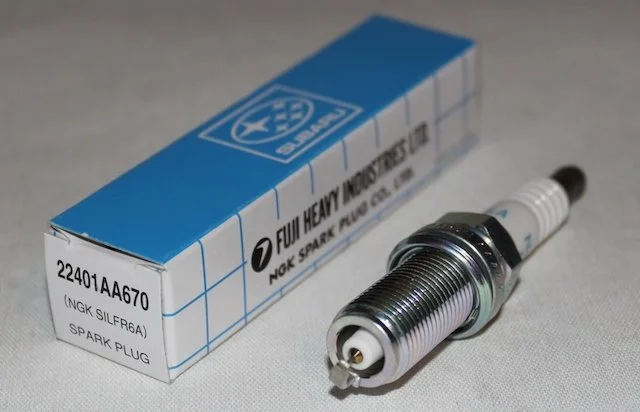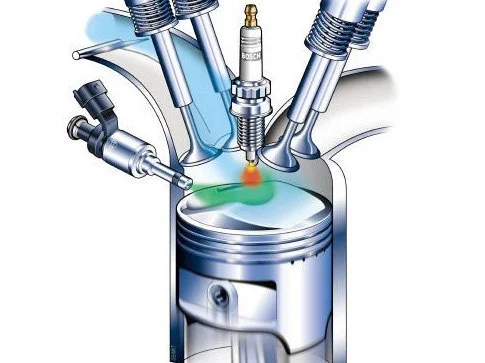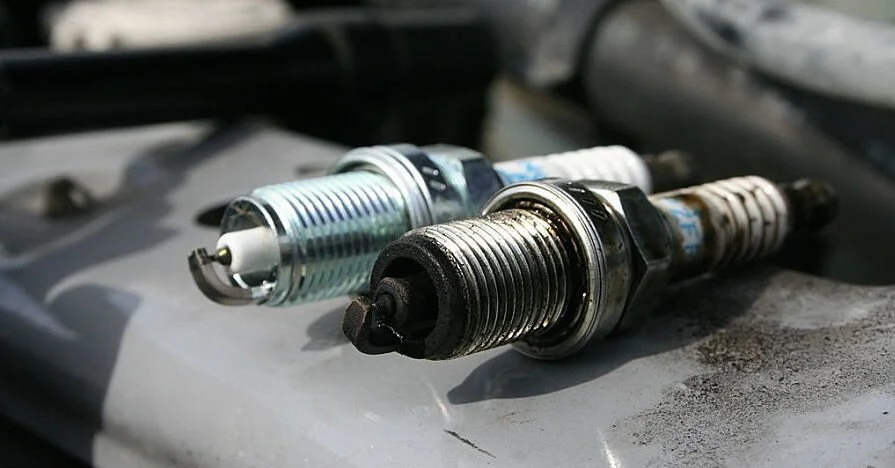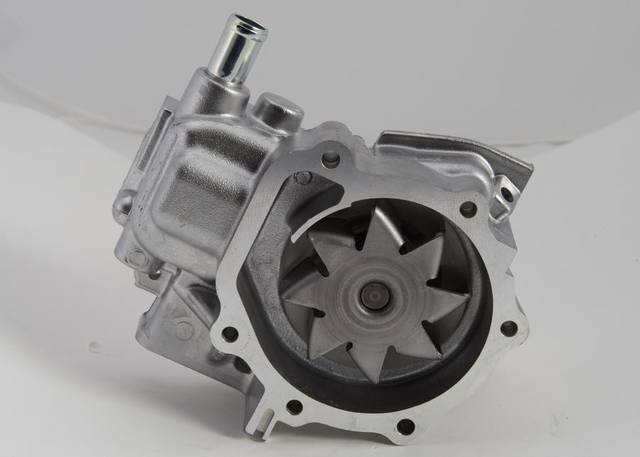
Spark Plugs: Why should you replace them?
What are Spark Plugs?
The spark plugs in your Subaru play a vital role in the operation of your engine. They provide the spark that ignites the fuel and air mixture in the combustion chamber, powering the engine and allowing you to drive. Over time, spark plugs can wear down and become dirty, affecting engine performance and potentially causing damage. In this blog, we'll discuss why changing spark plugs is important on a Subaru and what signs to look out for that indicate it's time for a replacement.
Why Should you replace them?
One of the primary reasons to change spark plugs on a Subaru is to ensure optimal engine performance. When spark plugs become dirty or worn down, they can misfire, causing engine hesitation, stalling, and reduced power. This can make it difficult to drive, especially on hills or when accelerating quickly. Replacing the spark plugs can restore engine power and improve fuel efficiency, helping you get the most out of your vehicle.
Another reason to change spark plugs on a Subaru is to prevent damage to other engine components. When spark plugs misfire, it can cause unburned fuel to enter the catalytic converter, potentially causing damage to this important emissions control component. Additionally, misfiring spark plugs can cause damage to the engine's pistons and valves, leading to costly repairs down the line. By replacing spark plugs regularly, you can prevent these issues from occurring and prolong the life of your engine.
How Do I know when they need to be replaced?
So how can you tell if it's time to change spark plugs on your Subaru? One of the most common signs is a noticeable decrease in engine power and acceleration. You may also experience rough idling or engine hesitation, particularly when accelerating or driving uphill. In some cases, you may even hear a knocking or pinging sound coming from the engine. Additionally, if you notice a significant decrease in fuel efficiency, it may be time to replace your spark plugs.
Conclusion:
Changing spark plugs on a Subaru is an important part of maintaining optimal engine performance and preventing damage to other engine components. Signs that it's time for a replacement include reduced engine power, rough idling, and decreased fuel efficiency. By having your spark plugs inspected and replaced regularly, you can ensure that your vehicle is running smoothly and avoid costly repairs down the line. If you suspect that your spark plugs may need replacement, don't hesitate to call PM Autoworks to have them inspected by a qualified mechanic.
Timing Belt: Why is it Important?
What is a timing belt?
A timing belt is a belt that keeps the engine components in sync with each other. It is a belt that connects the crankshaft to the camshafts and keeps the engine running smoothly. In order for an engine to operate properly, the valves need to open and close at the right time as the engine rotates. A degree too early or a degree too late and the engine may have trouble with getting in the right amount of air/fuel mixture or have compression issues. Both are a cause for Engine Cylinder Misfire (running rough). For that reason the timing belt is there to make sure that the engine components are in sync.
Why is it important to replace the timing belt?
The reason why its important replace the timing belt is to prevent it from breaking and causing major engine damage. Subaru engines in particular are interference engines meaning that if the timing belt breaks, the valves and pistons may collide and cause serious damage to these components. When this happens the repair can cost thousand dollars and in a worst case scenario, a new engine may be required. This is why it is highly recommended to replace the timing belt at the recommended service interval.
How often should the timing belt be replaced?
It is best to check with the car manufacturer on when to service the timing belt. For Subaru vehicles in particular (and many other manufacturers), it is recommended to replace the timing belt every 105,000 miles or 10 years. The reason behind this is because the timing belt is made partially of rubber, and rubber can degrade in couple ways:
1) Over prolong use. As the engine rotates, the timing belt is constantly under stress as it flexes around pulleys and is being pulled by the crankshaft. After a certain amount of engine rotations, the timing belt will eventually become weak and break.
2) Over Time. Like many things in life, rubber does have a shelf life. As time goes by it starts to become dry and brittle (especially with heat). When this happens the rubber will develop cracks which will eventually cause it to break. Think of an old rubber band that has been sitting in the sun for a while. If you try to stretch it you’ll notice that it cracks rather than stretches and breaks way before it reaches its intended stretching point.
What is the best timing belt brand to use?
We recommend using only OEM timing belts as these belts have been tested and proven to have a service life of 105,000 miles or 10 years. Although there are other after market belt options that may be cheaper, they may not be as reliable as an OEM belt. The money saved on a cheaper timing belt may end up costing more in the long run. There are good aftermarket belt options out there although research is recommended before purchasing.
What else should be replaced while doing the timing belt?
Along with the timing belt, there are other components that we highly recommend replacing while the engine is taken apart. These items include the tensioner, accessory pulleys, and the water pump.
The timing belt tensioner is what keeps the belt at the proper tension during engine operation. Too tight and the belt is overly stressed. Too loose and the belt may skip a tooth. Just like the timing belt on Subarus, the tensioner also has a life span of 105,000 miles or 10 years.
From what we’ve seen at many dealerships when the servicing the timing belt, the accessory pulleys and water pump are not always replaced. This is a bad idea because the timing belt rides on these pulleys and if one of these components fail, the timing belt may fail with it.
Conclusion
The timing belt should be replaced as per manufactures recommendation. For Subaru vehicles it is every 105,000 miles or 10 years. If the timing belt service is neglected, major engine damage can result from the belt snapping. When this happens the repair may cost several thousand dollars. As a preventative, it is important to replace the timing belt as well as all other accessory components using high quality OEM parts at the correct service interval.
If you need your timing belt service done on your Subaru, feel free to give us a call or email here at PM Autoworks for a free estimate. Rest assured, we will use only high quality OEM parts that come with a 1-year/12,000 mile warranty. Don’t wait, call now!













